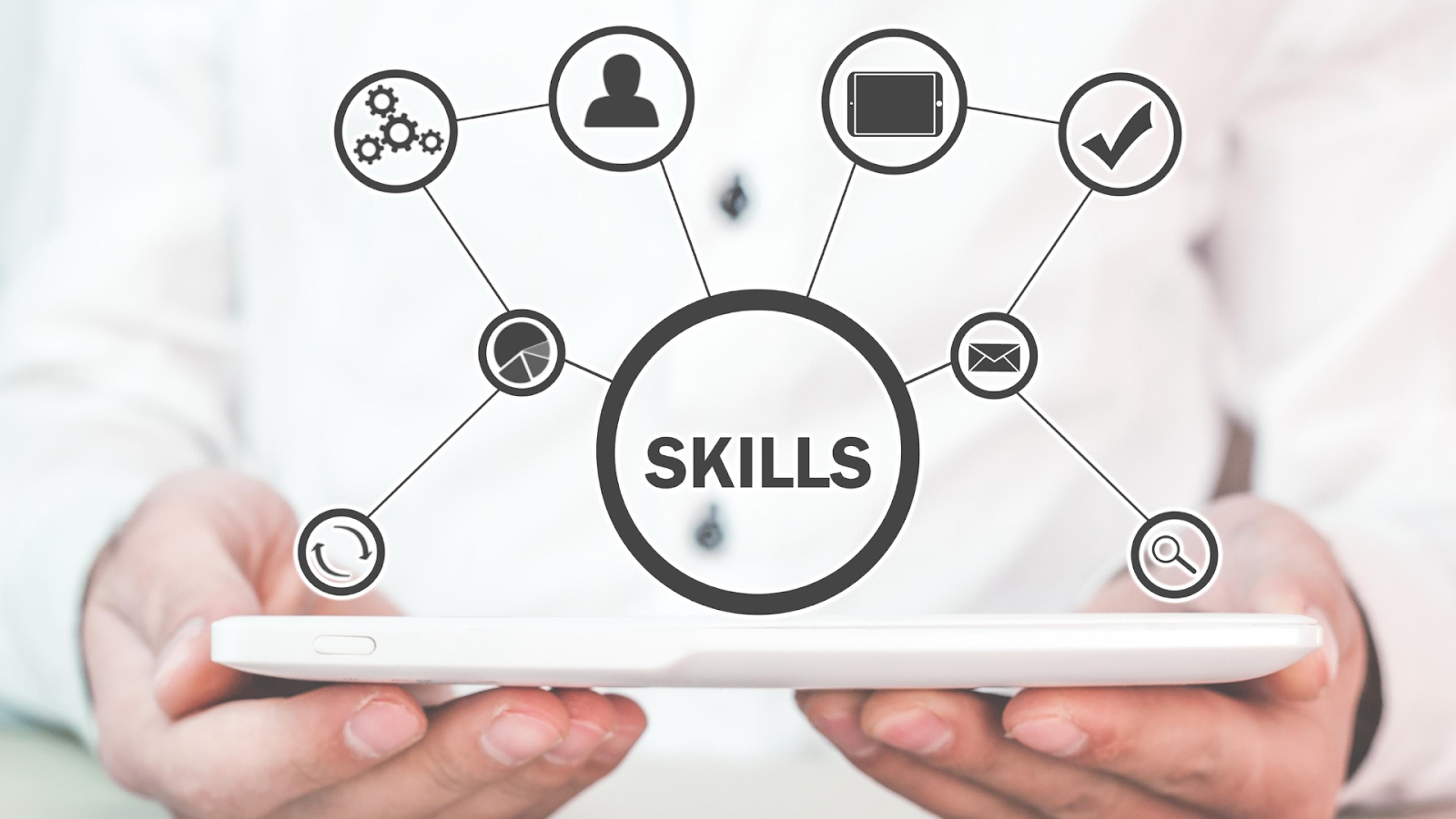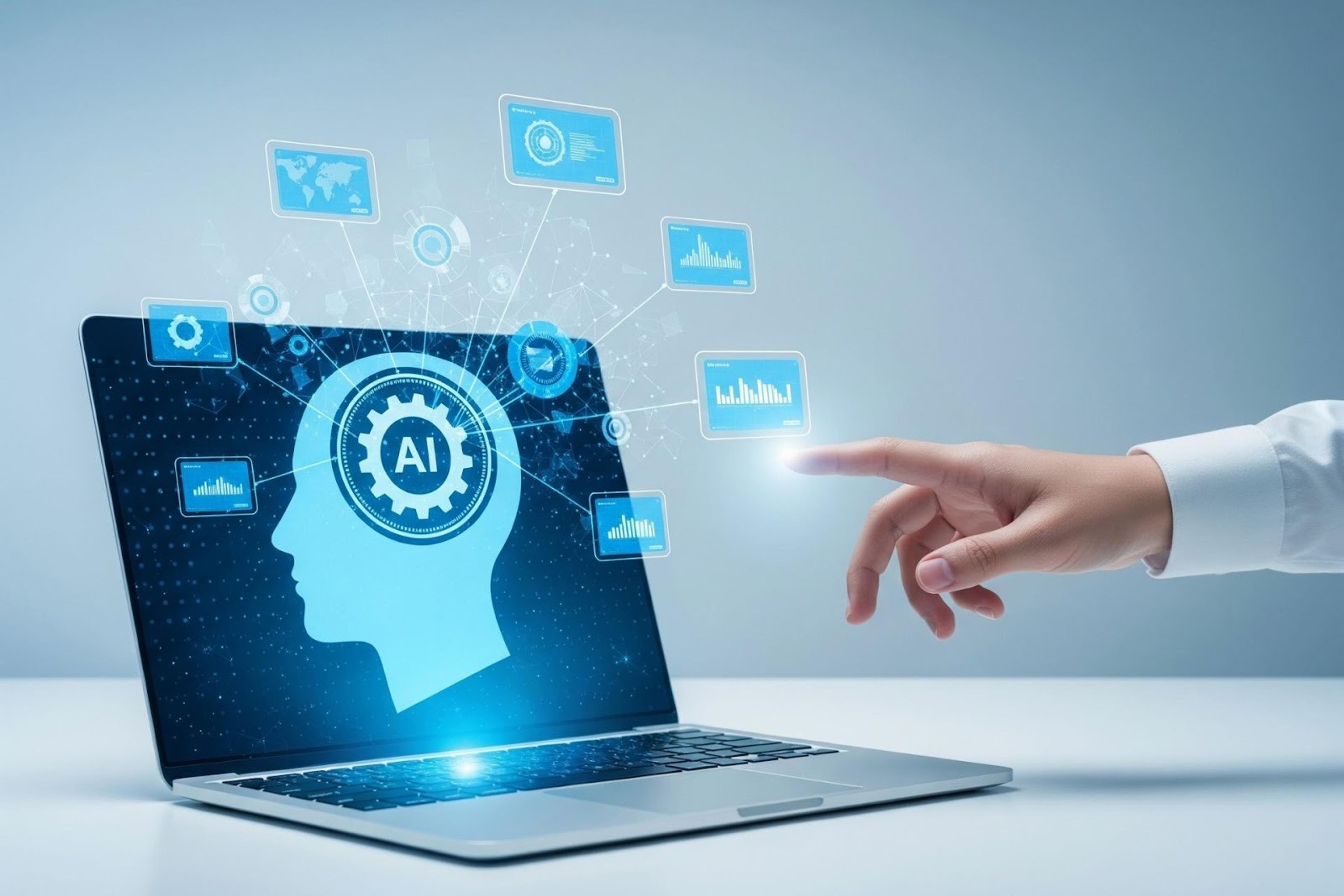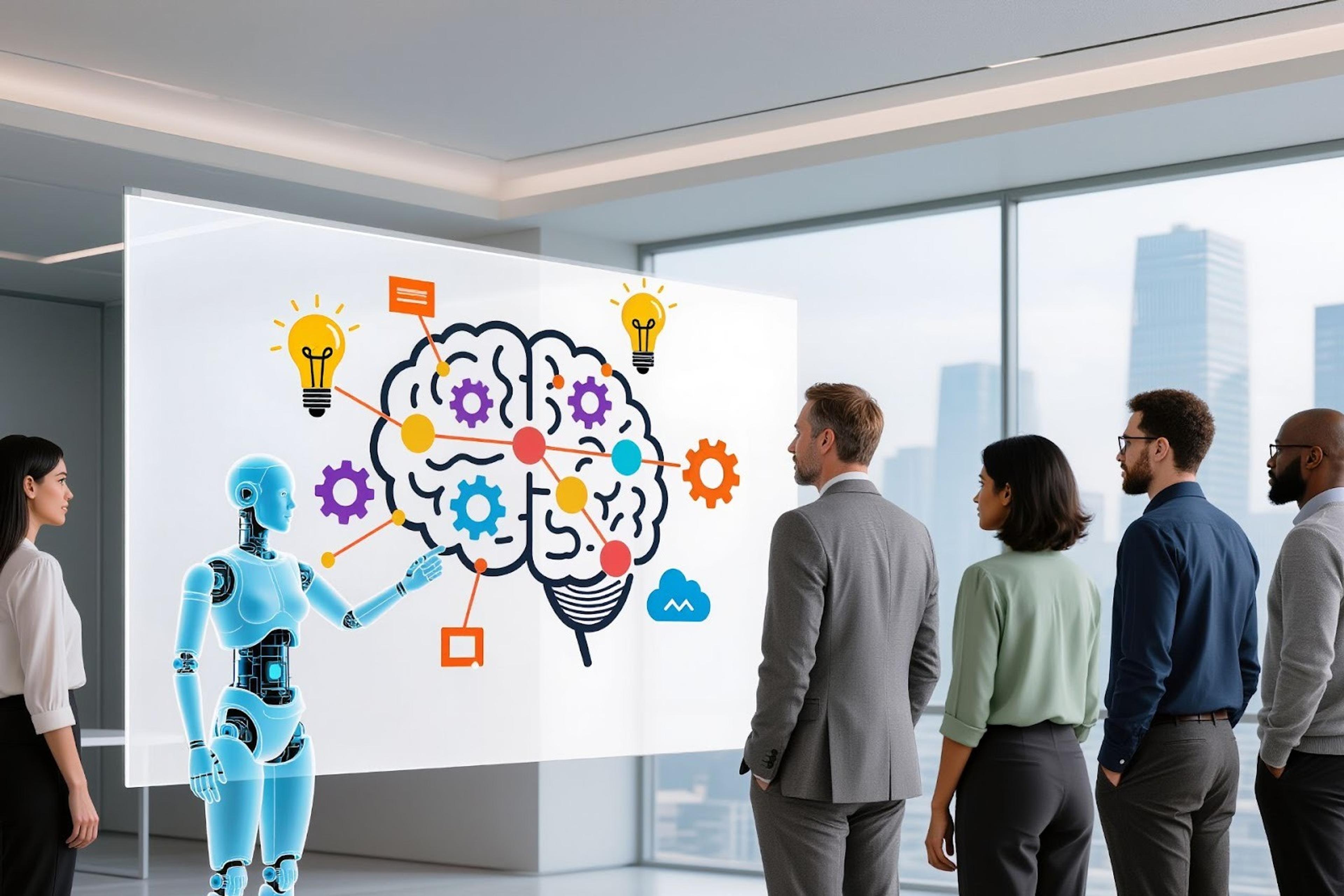AI Upskilling: Why It’s Necessary & How to Get Started
Learn why AI upskilling matters and how to build practical AI skills to stay ahead, boost productivity, and grow your career.
Posted November 21, 2025

Join a free event
Learn from top coaches and industry experts in live, interactive sessions you can join for free.
Table of Contents
Artificial intelligence (AI) is no longer limited to tech labs or research centers. It is part of everyday work across every industry. From automating reports to building new products, AI tools now touch nearly every business function. The age of AI demands new kinds of talent, and that’s where AI upskilling comes in.
For professionals who want to stay ahead, learning how to use and apply AI technologies is becoming one of the most practical ways to stay relevant. I’ve seen how this shift impacts both employees and business leaders. The companies that embrace AI and invest in learning and development tend to move faster, adapt better, and create a stronger foundation for growth.
Read: Artificial Intelligence Jobs: Salary Overview by Seniority
What Is AI Upskilling and Why Does It Matter?
AI upskilling means developing the knowledge and skills needed to use, manage, and collaborate with AI tools effectively. It’s part of a wider effort in talent development where teams learn to work alongside automation rather than compete with it.
Reports from the World Economic Forum show that over half of employees will need AI skill development within the next few years. Jobs that require data analysis, machine learning, and natural language processing (NLP) are growing fast, but so are roles that depend on AI literacy and creative problem-solving. Additionally, the World Economic Forum estimated that automation will displace 85 million jobs by 2025, underscoring the urgency of upskilling efforts.
The BCG Henderson Institute found that organizations leading in AI upskilling efforts report higher innovation rates and stronger business outcomes. These companies connect AI training directly to strategy, creating a workforce that adapts to new technologies and keeps the organization thriving. To make these efforts sustainable, organizations should integrate learning programs into broader strategies.
In short, AI upskilling isn’t just for engineers or data scientists. Every employee can use AI applications to improve daily tasks and drive results in a meaningful way.
Read: How to Future-Proof Your Career in The Age of AI
How AI Is Changing the Workforce
The Impact on Job Roles
AI is transforming how people work. Routine tasks that once took hours can now be automated with a single prompt. For example, tools built on AI models can summarize reports, identify insights from their own data, or generate visuals in seconds.
Instead of replacing jobs, AI changes them. Roles evolve to focus more on strategy, analysis, and creativity. Employees who gain AI fluency and learn to use AI confidently will find new ways to add value.
| Job Role | AI Integration Example | Skills Required |
|---|---|---|
| Marketing Analyst | Automate reporting with generative AI tools | Data analysis, prompt engineering |
| HR Specialist | Use AI applications to screen resumes | AI literacy, responsible AI |
| Operations Manager | Integrate AI to track inventory or workflows | Machine learning, AI capabilities |
| Product Designer | Build prototypes using generative AI | AI tools, creative problem-solving |
Bridging Skill Gaps
Many companies are already taking action. Managing directors and associate directors are designing upskilling programs that teach AI competencies across departments. Business leaders and the C-suite are aligning AI training with company goals to reduce skill gaps and future-proof their teams. Organizations need leaders at the C-suite level to adopt AI upskilling as a top priority for successful implementation.
At Harvard Business School, leadership research highlights that upskilling efforts not only enhance team performance but also strengthen employee retention. When employees embrace AI, they feel more confident about their future and contribute to stronger collaboration. Employees who engage in upskilling also tend to report increased job satisfaction.
The Core AI Skills You Need
Developing AI expertise requires both technical and practical understanding. You don’t need a technical background to start. You just need curiosity and a willingness to learn.
Technical AI Skills
These skills build your foundation for working with AI technologies:
- Machine Learning (ML): Learn how computers recognize patterns and improve through data.
- Deep Learning and Neural Networks: Understand how advanced systems mimic human reasoning.
- Natural Language Processing (NLP): Explore how AI reads and generates human language for chatbots and virtual assistants.
- Computer Vision: Learn how machines interpret images and video to automate tasks in manufacturing, retail, or healthcare.
- Prompt Engineering: Practice writing precise prompts to guide generative AI systems to produce better results.
Applied and Business Skills
Not all AI learning is technical. Many roles require practical application skills, such as:
- Data Analysis: Turning raw data into useful insights.
- AI Applications: Using AI tools to write, design, analyze, or plan.
- AI Capabilities in Workflows: Learning how to integrate AI into business functions for improved efficiency.
Human and Ethical Skills
As AI products grow more powerful, professionals need awareness of ethics and communication:
- Responsible AI: Making sure models are fair, transparent, and unbiased.
- AI Literacy and Fluency: Understanding how AI works at a high level.
- Enhance Communication: Explaining AI-driven insights clearly to clients or team members.
- Continuous Learning: Staying updated through self-paced courses, workshops, and communities.
AI Skill Pathways for Professionals
Every professional’s journey to developing strong AI skills looks different. Some are just discovering generative AI tools, while others are already applying advanced concepts like deep learning or integrating automation across teams. This simple pathway helps you identify your current stage, understand the skills needed at each level, and plan your next step toward AI fluency.
| Level | Description | Focus Areas | Next Step |
|---|---|---|---|
| Explorer | You’re new to AI and curious about how it fits into your field. | AI literacy, prompt basics, and understanding responsible AI. | Start with an introductory course on AI fundamentals to learn core concepts like machine learning and deep learning. |
| Practitioner | You’re using generative AI tools to improve productivity or simplify workflows. | Workflow automation, AI applications, and ethical use of AI. | Apply AI tools in your daily work, summarize reports, brainstorm ideas, or automate simple data tasks. |
| Strategist | You’re aligning AI skills and insights with team or business objectives. | Data-driven decisions, collaboration, AI project management. | Build internal playbooks that show how AI applications and deep learning models can drive efficiency and innovation. |
| Leader | You’re leading initiatives that embed AI across departments or product lines. | Change management, responsible AI, innovation leadership. | Launch a company-wide AI upskilling program that connects generative AI capabilities with strategic business goals. |
How to Use This Framework
Think of these stages as a continuous learning loop. Even professionals with advanced AI skills return to the Explorer stage to stay updated on new generative AI tools and deep learning techniques. Identify where you are, apply what you learn, and move forward one level at a time to stay ahead in the AI-driven workforce.
Read: How to Get Into AI: Jobs, Career Paths, and How to Get Started
How Business Leaders Can Drive AI Upskilling
The Role of Leadership
Business leaders and tech leaders play a key role in how organizations embrace AI. The most successful upskilling programs combine technical content with strategy and collaboration.
C-suite executives are connecting AI learning directly to performance metrics. By embedding AI training in learning and development programs, they create teams that can adapt quickly and improve business outcomes.
Leaders who promote continuous learning also help employees see AI as a tool for growth, not a threat. Many industry leaders now partner with global experts to guide employees through structured AI upskilling journeys.
Building a Culture of AI Learning
Building a culture of AI learning is needed for organizational success. Companies can foster this by forming peer groups to share use cases, encouraging experimentation with AI tools, and rewarding curiosity and project-based learning. Investing in flexible, self-paced online training and inviting industry experts to host sessions on AI and ethical practices also supports growth. When employees see leadership investing in AI development, it motivates them to learn and contribute.
How to Get Started with AI Upskilling
1. Identify Gaps and Goals
Start by mapping where your skills required for the future don’t match your current strengths. Use self-assessments or feedback from managers to identify gaps in AI competencies.
| Skill Area | Current Level | Goal | Next Step |
|---|---|---|---|
| AI Literacy | Beginner | Intermediate | Take an introductory AI training course |
| Machine Learning | None | Basic | Join a self-paced online course |
| Prompt Engineering | Basic | Advanced | Practice writing prompts in generative AI tools |
| Responsible AI | Beginner | Intermediate | Attend an ethics workshop |
2. Choose the Right Learning Path
Choose an upskilling program that aligns with your schedule and career goals. Self-paced courses offer the flexibility to balance work and learning, making them ideal for busy professionals. Online training from trusted providers often includes mentorship and real-world projects, ensuring you gain practical experience. To ensure credibility, opt for programs backed by universities or industry leaders. Platforms such as Coursera, edX, and LinkedIn Learning offer valuable resources to keep your AI knowledge up-to-date.
3. Build a Basic Understanding
Focus on building a basic understanding of artificial intelligence (AI). Learn how AI models, neural networks, and data scientists shape systems that recognize text, images, and speech.
Start small. Apply what you learn through AI tools that automate simple processes in your workflow.
4. Apply AI to Daily Tasks
Once you have a grasp on how AI applications work, start integrating them into your daily routine. You can automate tasks like data entry or reporting using these tools, making your workflow more efficient. It can also help you summarize research, brainstorm ideas, or generate content, whether visual or written. By applying your skills to real tasks, you'll reinforce your learning and build confidence in using AI effectively.
5. Learn with Others
Join peer groups or online communities where professionals share AI learning experiences. Collaboration helps reinforce new knowledge and exposes you to AI technologies beyond your own role. AI professionals should document their learning journey and showcase their skills on platforms like LinkedIn or GitHub.
Groups supported by Harvard Business School and the World Economic Forum encourage shared upskilling efforts where professionals learn from industry experts and case studies.
6. Track Progress and Stay Updated
AI changes quickly. Keep up by reading insights from BCG Henderson Institute, tech leaders, and global organizations. Make continuous learning a habit. Schedule weekly study sessions or mini-projects to maintain growth.
Measuring the Impact of AI Upskilling
To show progress, both individuals and companies can measure success across a few areas:
| Metric | Description | Example |
|---|---|---|
| Skill Development | Growth in AI literacy or expertise | Completion of the AI training program |
| Productivity | Time saved using AI applications | Automating reports or data entry |
| Innovation | New ideas or AI products created | Designing an internal chatbot |
| Collaboration | Improved communication between teams | Sharing insights from AI tools |
Leaders should connect upskilling efforts with measurable outcomes, like faster project delivery, reduced costs, or improved customer experiences.
The Future of AI Upskilling
The next phase of AI upskilling will focus on agentic AI, advanced generative AI, and adaptive learning systems. These tools will make AI learning more personal, interactive, and efficient.
As employees grow their AI expertise, they help the organization thrive and maintain a competitive advantage. The future of work belongs to those who keep learning, experiment with new technologies, and stay ahead by turning AI skills into career opportunities.
Companies investing in AI upskilling programs today will become the global leaders of tomorrow. They’ll attract better talent, improve business outcomes, and build workplaces that innovate faster.
Expert Tips to Build the Right AI Skills and Stay Ahead of Generative AI
Redefine “AI Skills” as Business Capabilities, Not Just Technical Proficiency
Many professionals limit AI skills to coding or data science, but the real advantage comes from translating AI into outcomes. Treat AI fluency as a strategic capability, the ability to identify where generative AI can create leverage, reduce inefficiency, or improve decision-making. When you start viewing AI literacy this way, you shift from learning tools to driving transformation. This is the mindset top performers adopt: using technology not just to automate, but to enhance strategy, communication, and creativity.
Prioritize Skills That Compound, Not Just Skills That Impress
The skills needed to thrive in an AI-driven workplace are those that layer over time, ones that make you adaptable when tools evolve. Focus on foundational knowledge that compounds: understanding deep learning logic, model limitations, and ethical reasoning. These aren’t glamorous, but they’re what separate “prompt users” from strategic professionals. Instead of memorizing features of one AI tool, learn the universal patterns behind how algorithms process information and how human oversight improves them.
Build “Hybrid Intelligence” - Let AI Handle Data, You Handle Direction
True AI fluency means knowing where human expertise ends and algorithmic insight begins. Generative AI can summarize data, predict outcomes, or produce content, but it can’t assign context or intent; that’s your job. The professionals who lead in this space build “hybrid intelligence”: they let AI handle the heavy computation while they interpret patterns, challenge assumptions, and make decisions based on the bigger picture. Upskilling should focus on that integration point where AI skills and human judgment meet.
Learn How to Evaluate, Not Just Operate, AI Systems
Anyone can use generative AI; very few can assess its reliability. As AI becomes embedded in workflows, companies increasingly value employees who can audit or evaluate model output. That means learning to question data sources, detect bias, and test whether results from a deep learning model align with ethical and operational goals. These are the skills needed to ensure AI isn’t just powerful but also trustworthy and aligned with your organization’s values.
Treat AI Upskilling as an Ongoing Experiment, Not a One-Time Course
AI literacy has a half-life. What you learn today could be outdated in six months. The best professionals treat AI upskilling like a scientific process: they test, observe, refine, and repeat. Set recurring checkpoints to reassess your AI skills, revisit your tools, and test new workflows using generative AI. Continuous iteration turns learning into intuition, and that’s how you stay relevant when the next breakthrough in deep learning or automation arrives.
The Bottom Line
AI is changing how work gets done. But it’s also creating new growth opportunities. Whether you’re a manager, a student, or part of the C-suite, learning to use AI effectively is one of the smartest ways to enhance productivity and future-proof your career.
Start small, learn the basics, apply AI tools to your daily routine, and build momentum through continuous learning. Over time, these skills will set you apart, help your organization thrive, and prepare you for whatever comes next in the future of work.
Ready to Grow Your AI Career?
You don’t need to figure it out alone. Partner with a Leland AI Career Coach to map your learning path, strengthen your AI skills, and position yourself for the roles of the future. Start your upskilling journey today and turn curiosity into career momentum.
Looking for a personalized AI roadmap for your career? Book a session with our expert AI coaches and let’s create your path to success. Don’t forget to explore our free events to gain more insights!
Read these next:
- Top 20 Careers in AI & Machine Learning
- How to Build an AI Agent From Scratch: The Beginner's Guide
- How to Become an AI Specialist
- Top 10 AI Certification Programs
- How to Land an Internship at OpenAI
FAQs
How can I upskill in AI?
- Start by learning the basics of machine learning and generative AI through online courses, then apply what you learn in real projects or daily work tasks.
What is the 30% rule in AI?
- It’s the idea that AI can automate about 30% of most jobs, allowing people to focus on higher-value, strategic, and creative work.
What AI skills are most in demand?
- Skills in machine learning, deep learning, data analysis, prompt engineering, and responsible AI are the most sought-after today.
What are the 7 main areas of AI?
- The key areas include machine learning, deep learning, natural language processing, computer vision, robotics, expert systems, and neural networks.
Browse hundreds of expert coaches
Leland coaches have helped thousands of people achieve their goals. A dedicated mentor can make all the difference.

















